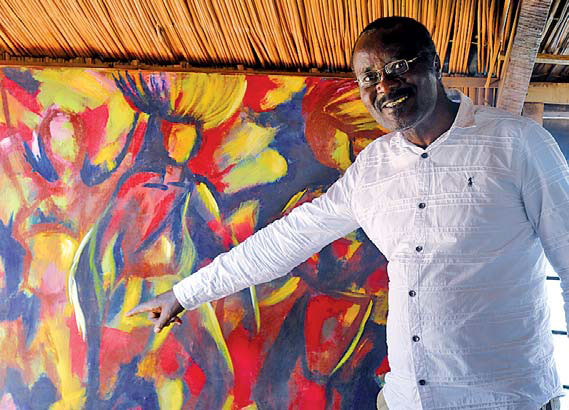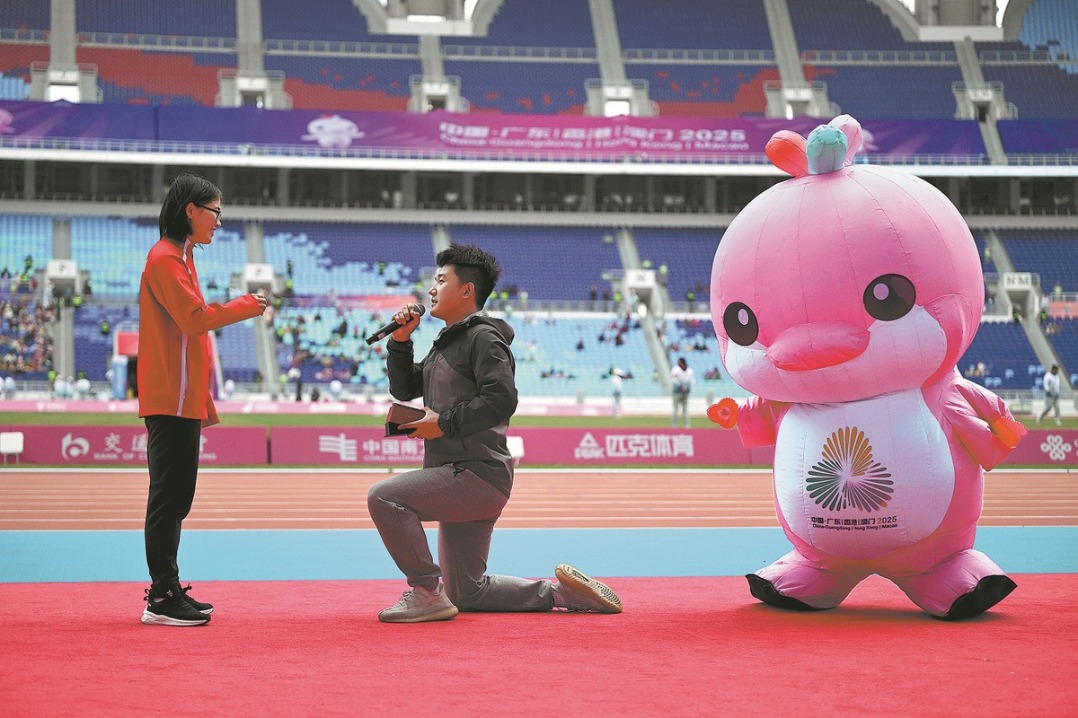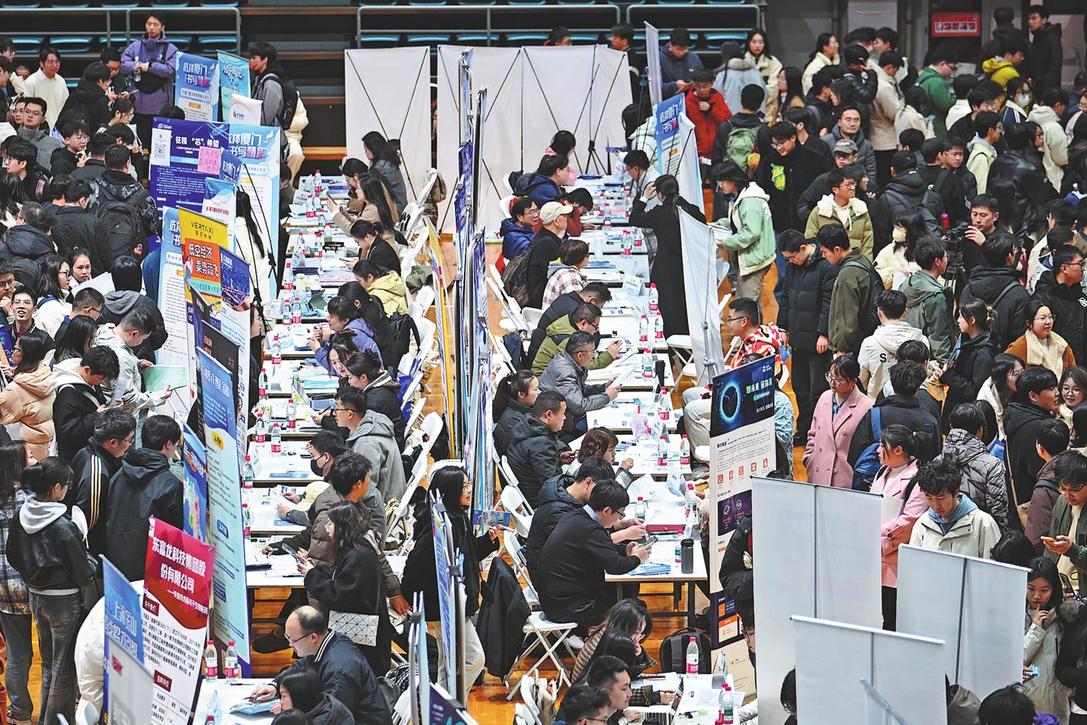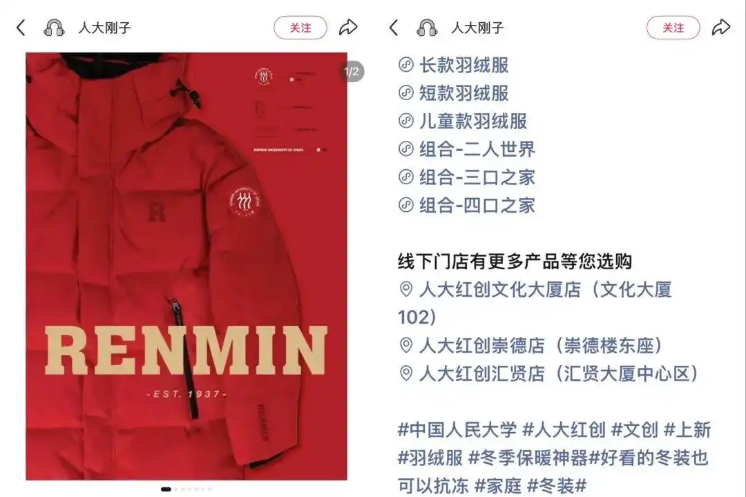Exchanges bring opportunities

Africans and Chinese can now understand each other clearly, interact freely and engage in business, thanks to growing cultural exchanges and cooperation between the two parties.
Kiprop Lagat, Kenya's Director of Culture, says the Chinese government has played a key role in enhancing its cultural ties with Africa through various programs.
Between 2013 and 2015, Chinese and African cultural organizations working in performances, exhibitions, personnel, training, cultural heritage protection and intangible cultural heritage preservation signed 70 agreements and realized direct cooperation under the China-Africa Cultural Cooperation Partnership Program.
| Patrick Adoyo explains one of the artworks displayed at The Art Village, Nairobi, Kenya. Edith Mutethya / China Daily |
Launched in 2013, the program aims to promote the building of long-term paired cooperation between 100 Chinese cultural institutions and 100 African cultural institutions. So far, nearly 70 organizations on each side have forged long-term cooperative ties with their foreign counterparts.
In 2015, the Chinese Ministry of Culture launched its 1,000 People Plan project, aiming to train Africans involved in various aspects of culture. The program, which aims to train 1,000 people by the end of 2018, has so far seen more than 200 Africans receive training on cultural management in China.
The Chinese government has also opened cultural centers in Egypt, Tanzania, Mauritius, Nigeria and Benin, with plans to expand to other African countries. These are in addition to the various Confucius institutes and classrooms throughout Africa.
According to Lagat, through these programs, Africans have developed a strong interest in learning their culture and language.
"A lot of myths have been demystified, making it easier for Chinese to do business in Africa. The cultural cooperation has also opened up avenues for African products to be sold in China. This is in addition to increased tourism from China," says Lagat.
Africa is also learning about cultural preservation through training in China.
"China has successfully integrated its physical cultural heritage with intangible cultural traditions, hence we are learning from them," says Lagat.
Lagat says Africa can take a leaf from China in value-added traditional medicine. Africa, he notes, has a rich tradition when it comes to ethnic medicine, which would help society if value were added.
According to the World Health Organization (WHO), up to 40 percent of the African population uses traditional medicine as primary healthcare. Integration of traditional medicine into its healthcare system would therefore enhance access to healthcare.
Patrick Adoyo, who participated in a one-and-a-half-month residency program at the Chengdu School of Culture and Art in China last year, says China has made great strides in preserving its people's artwork and supporting artists.
Like China, he says African countries should recognize their artists, appreciate their work, give them positions in society, encourage them to produce and ensure they benefit from their work.
"China has various galleries that belong to universities and several museums where artists can display their work. In Africa, galleries are few and they only display the work of experienced artists, so the upcoming ones have no place to exhibit their artwork," he says.
As per the Kenyan situation, Adoyo says galleries charge a commission of 50 percent of sales, which he feels is unfair to artists.
During the residency program, Adoyo had an opportunity to learn about modern art as well as use of porcelain.
In a group of six visual artists, drawn from various African countries, he visited a range of sites like art villages where they were allowed to work and produce their best. They also met and learned from some of the best painters in China.
Inspired by the Chinese art villages, in partnership with a friend, Adoyo has established The Art Village in Kenya's capital city of Nairobi. The village will display the artwork of both established and upcoming artists.
"I acquired many valuable ideas from the program. My artwork is better than before. I'm now doing abstract and modern art, thanks to the residency program," says Adoyo.
edithmutethya@chinadaily.com.cn
(China Daily Africa Weekly 02/10/2017 page21)
Today's Top News
- UN envoy calls on Japan to retract Taiwan comments
- Innovation to give edge in frontier sectors
- Sanctions on Japan's former senior official announced
- Xi stresses importance of raising minors' moral standards
- Coordinated reform key to country's growth
- Shandong gives new life to traditions






























